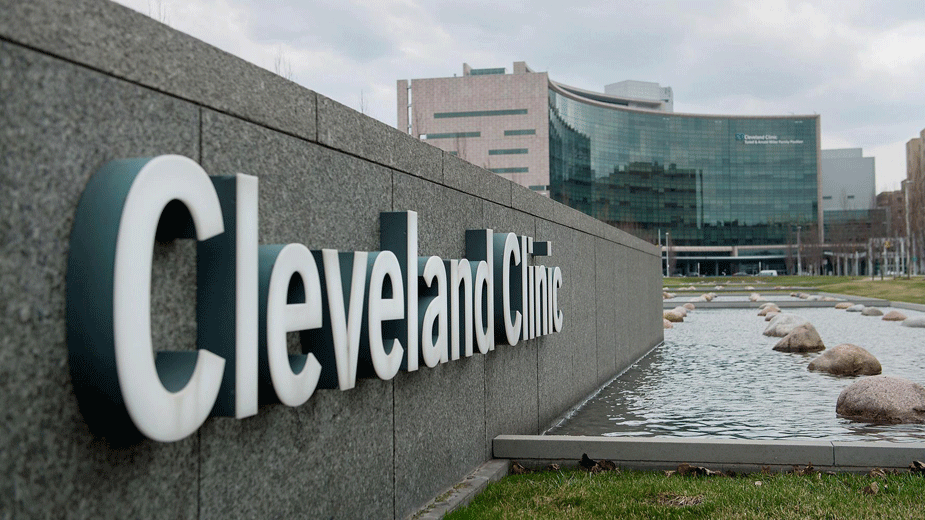Cleveland Clinic Performs Third Face Transplant
CLEVELAND — In a 31-hour surgery in May, 11 Cleveland Clinic surgeons and multiple specialists performed the hospital’s third face transplant — and its first total face transplant – on a 21-year-old female who suffered severe facial trauma and other complications from a gunshot wound as a teenager.
The surgery included transplantation of the scalp, the forehead, upper and lower eyelids, eye sockets, nose, upper cheeks, upper jaw and half of lower jaw, upper teeth, lower teeth, partial facial nerves, facial muscles, and skin, effectively replacing 100% of the patient’s facial tissue.
“To reach this point of recovery has often times been a difficult road to travel, but I’m thankful there’s been a road – and Cleveland Clinic has been the vehicle to help drive me along,” said the recipient in a statement released by the clinic. “I am forever grateful for the care this hospital has given me and continues to offer on my journey of recovery and healing. To call my surgeons, physicians, nurses and caregivers ‘world class’ would be an understatement. And to my donor and her family – words cannot express the appreciation I have for this incredible gift. With a grateful heart, I say ‘thank you’ to all who have made this possible for me.”
To protect the privacy of those involved, no further information will be released about the patient, the donor or their families.
Co-directed by Drs. Frank Papay, chairman of the Dermatology and Plastic Surgery Institute, and Maria Siemionow, the surgical team included Drs. Brian Gastman,James Zins, Risal Djohan, Mark Hendrickson, Graham Schwarz, Antonio Rampazzo, Bahar Bassiri Gharb, Raffi Gurunluoglu and Steven Bernard Specialists from anesthesia, bioethics, dentistry, immunology, ophthalmology, endocrinology, infectious disease, pharmacy, psychiatry and transplant were also involved.
“Plastic surgery is about restoring form and function,” said Dr. Papay. “Function comes before form, and prior to the face transplant, this patient had extremely poor function and form. Our job in reconstruction is to weigh the risk versus the benefit of doing face transplantation, and we felt the risk was well worth it to give this patient better function, better social form and, ultimately, a better life.”
When the Cleveland Clinic face transplant team reviewed this patient’s case, they had the end goal of face transplantation in mind — as facial reconstruction alone would not correct her facial disfigurement or improve her quality of life. With a face transplant at the forefront, the surgeons were able to safeguard any potential blood vessels that could be used for the transplant during her initial stages of reconstruction.
This surgery will give the patient the capability to speak more clearly, and breathe, chew, and swallow more effectively. She’ll also be able to use her face to better express emotions. In addition to significantly improved physical function, the patient will also have enhanced physiological, psychological and social function.
“Knowing this patient now has the opportunity to live a functional life because of her face transplant is the greatest reward,” said Dr. Gastman. “With a new nose, lips, palate, eyelids and jaw, she now has the full opportunity to re-integrate into society and have a future just like any other young adult. This surgery can give her back the self-esteem and confidence she lost.”
In a case of cooperative surgical innovation, the face transplant team utilized surgical rehearsal, 3-D printing and virtual reality as the main platforms for preoperative planning. These platforms helped optimize the accuracy, aesthetic and functional outcomes for the transplant.
Since the surgery, the patient is recovering well and getting accustomed to her new face. She is walking, talking and will begin eating orally shortly. She will continue to go through extensive rehabilitative therapy, including physical therapy, speech and swallowing therapy and occupational therapy. Doctors continue to monitor her closely for signs of tissue rejection. The patient, like all transplant patients, will remain on immunosuppressant medication for the rest of her life to prevent rejection.
In December 2008, Cleveland Clinic became the first U.S. hospital to perform a face transplant. At the time, it was considered the largest and most complex face transplant in the world, integrating different functional components such as nose and lower eyelids, as well as different tissue types including, skin, muscles, bony structures, arteries, veins and nerves.
Cleveland Clinic is one of six U.S. institutions that has conducted face transplants. Fewer than three dozen face transplants have been performed worldwide. This most recent face transplant was supported by the U.S. Department of Defense’s Armed Forces Institute of Regenerative Medicine grant program.
None of this would have been possible without the involvement of Lifebanc, northeastern Ohio’s nonprofit organization dedicated to saving and healing lives through organ, eye and tissue donation, the clinic noted.
SOURCE: Cleveland Clinic.
Copyright 2024 The Business Journal, Youngstown, Ohio.



